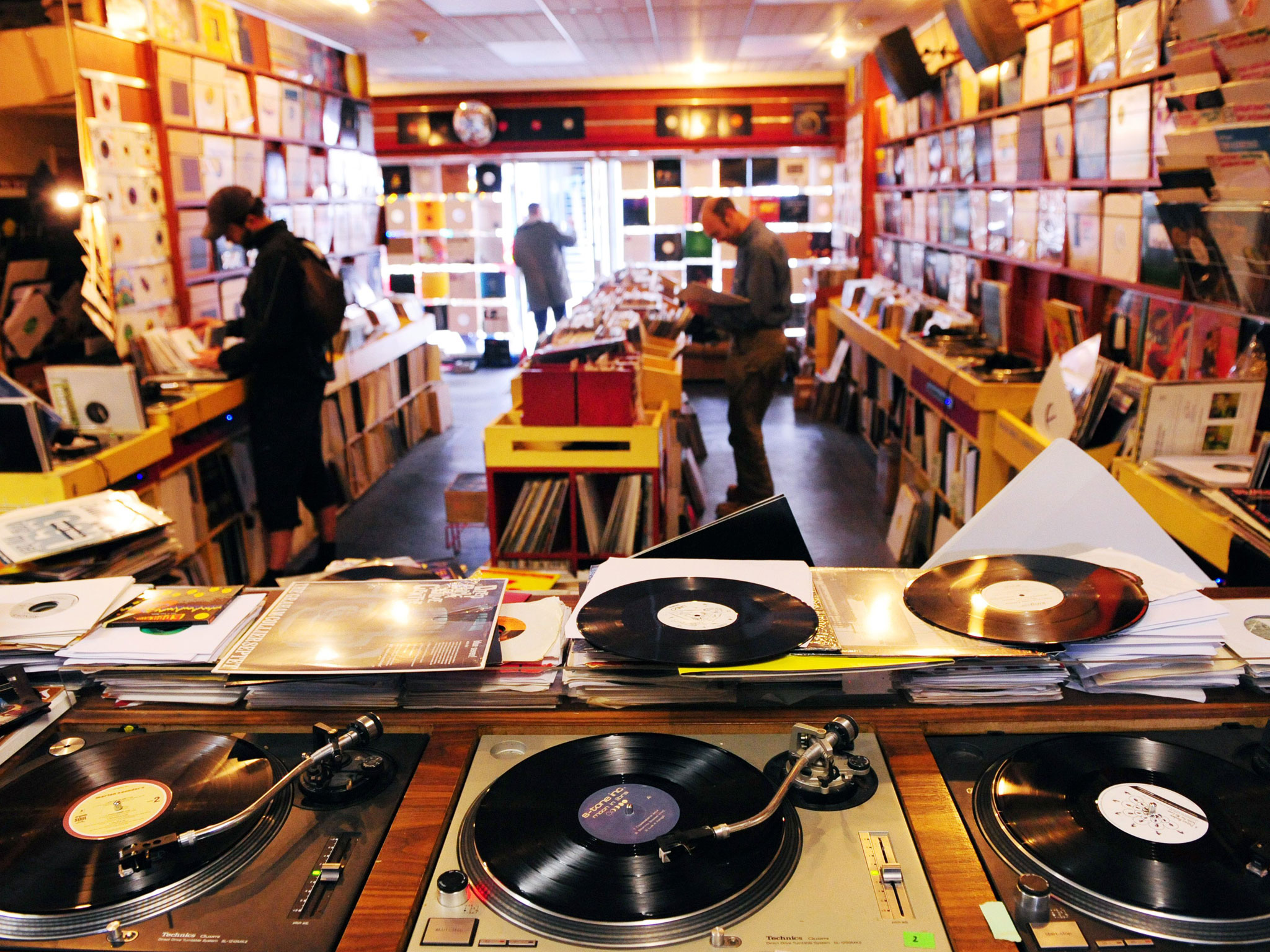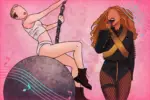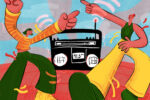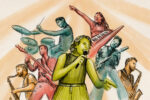Since the medium’s heyday in the late ’70s and early ’80s, vinyl records have been definitively replaced with CDs and subsequently by digital music. In recent years, however, with a growing cultural affinity toward anything vintage, vinyl has seen a resurgence, and rightfully so.
Listening to vinyl is unlike any other experience you’ll have with music—the spinning of the record before you place the needle on it, the slight thud once you do, and the silent noise of the recording studio you hear before the song itself starts. It’s intoxicating, timeless and will never be replicated by the likes of Spotify.
However, to the average consumer, vinyl may seem like something only dabbled with by the most pretentious hipster-luddites, which is far from the case. Vinyl can be enjoyed by anyone, and should be by everyone. And (cue record scratch) getting into it is easier than you’d think.
An easy first step is to scope out turntables and whether or not your local record store sells them. If they do, that’s the most expedient purchase, and a way to avoid shipping fees you would encounter ordering from Barnes & Noble, Amazon, or any other online distributer. If you don’t have a record shop near you or would simply rather order online, those sites are two perfect options to find a quality record player.
Additionally, if you search the Internet for “record players” and go to Google’s “Shopping” feature, you can look at individual products and compare prices from various distributors. The Victrola 3-Speed is portable, available in turquoise and is listed at $49.99 at Bed Bath & Beyond (of all places), which is not only a steal, but a precious introduction to your days of spinning records.
Whether you wish to buy a portable or stationary turntable will also be a factor. I opted for the portable as they tend to cost less, and can nicely be displayed just about anywhere. They also live up to their name, as they’re lighter and more functional, which works if you want to change locations every now and then to listen with different surroundings.
Having said that, a friend of mine recently went thrifting and came across an elaborately-designed record player—complete with drawers for the vinyl supporting the turntable itself—for around $30, and it’s sitting snug in the corner of his office at work. There are many deals out there (some right under our noses) and it’s only a matter of looking in the right place, which may, in a twist of fate, be Bed Bath & Beyond or Goodwill.
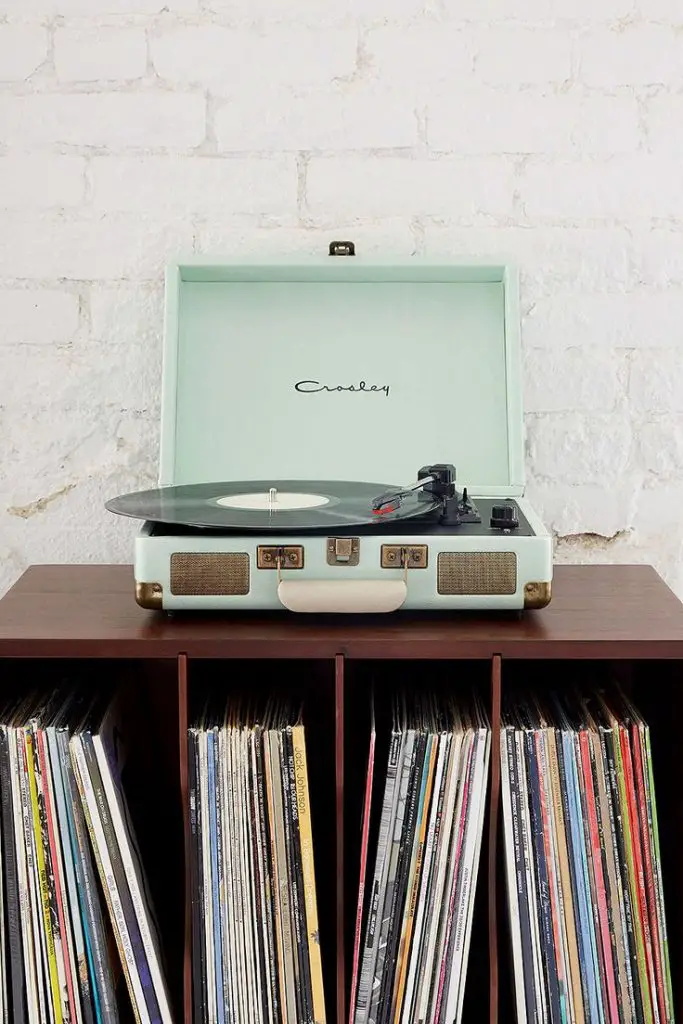
The natural next step in this process is acquiring the records themselves. To first test out your record player and make a purchase you know you won’t regret, start out by buying a record you already know you like. Vinyl is much more of a commitment and an investment than pulling up a music video uploaded to YouTube; you can absolutely re-sell an album that you don’t enjoy, but you should want to build a strong library of records you hold dear.
If your all-time favorite album is Fleetwood Mac’s “Rumours,” it’s almost guaranteed that any shop near you will have it in stock and that it’ll soon be spinning somewhere in your possession. Many big-name artists cover their bases and produce vinyl versions of their work, so, conversely, if you live solely off of Carly Rae Jepsen’s “E-MO-TION,” it won’t be difficult to track down. Starting with buying records you know you love before branching out to other albums ensures that your experience with vinyl will start strong.
A great way to expand your blossoming record collection is to ask around and see if anyone you know has any old vinyl they’re willing to give up. Many people above 40 will have some semblance of a collection they’re not using and will gladly give it to someone interested in having it. Most of my own collection was given to me by my parents—Bruce Springsteen, The Beatles, Peter Frampton and even comedy albums that were collecting dust before falling into earnest hands.
This is also a great method for interacting with artists you never would have otherwise; I had little knowledge of Elton John before first dropping the needle on my mom’s frayed copy of “Goodbye Yellow Brick Road,” which I now consider one of my favorite albums. This will also immerse you in a different generation’s music and culture, a great deal of which is considered the stuff of legends, which is enriching in itself.
As far as broadening your musical horizons, this is where having a store local to you that sells records will be key, be it a small local business or a Barnes & Noble’s vinyl table. Flipping through rows of albums just to absorb the album art and the artists represented is a lost pastime, but is best revived so you can become acquainted with artists you haven’t thus far discovered, and run into those with which you’re already familiar.
Much of the time, an album’s cover art will give an accurate portrayal of the experience you’ll have listening to it. “Dark Side of the Moon,” “Joanne” and “Hotel California” will not deceive you, but they will give you an idea of the work in a visual sense. Every now and again, though, you will encounter a “Led Zeppelin I,” which you may mistake for an audiobook on the Hindenburg disaster transferred inexplicably to vinyl format, instead of music that may be exactly what you would be enamored by.
The cover can tell a lot about the music behind it, but never fully write off a record simply based on its aesthetic presentation. If you’re in an adventurous mood, maybe even spring for a record you would never normally select (Parliament’s “Mothership Connection” led me to the world of funk by this very strategy).
Once you’ve bought your turntable, records of your favorite albums, scrounged vinyl from the Baby Boomers in your life and have taken a leap on some records you wouldn’t normally listen to, you will have a balanced and fleshed-out set of vinyl, and solid experience with it, ready to expand on your new collection. And by that point you won’t even mind that the oldest record you were given is skipping—you can always just pull the song up on YouTube anyway. Just the same, they’ll always reissue new vinyl of old records. It’s about the experience as a whole, and if you’re willing to put in a little bit of work, then the process becomes all the more enjoyable.


